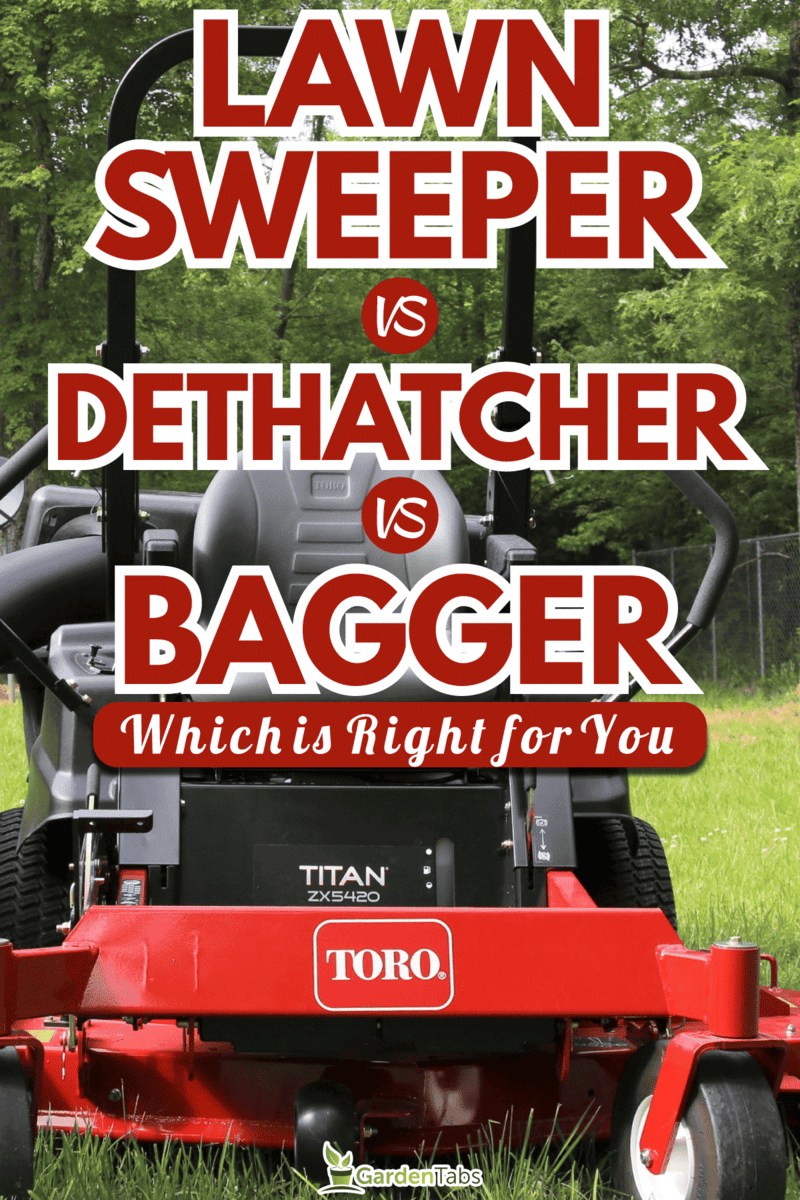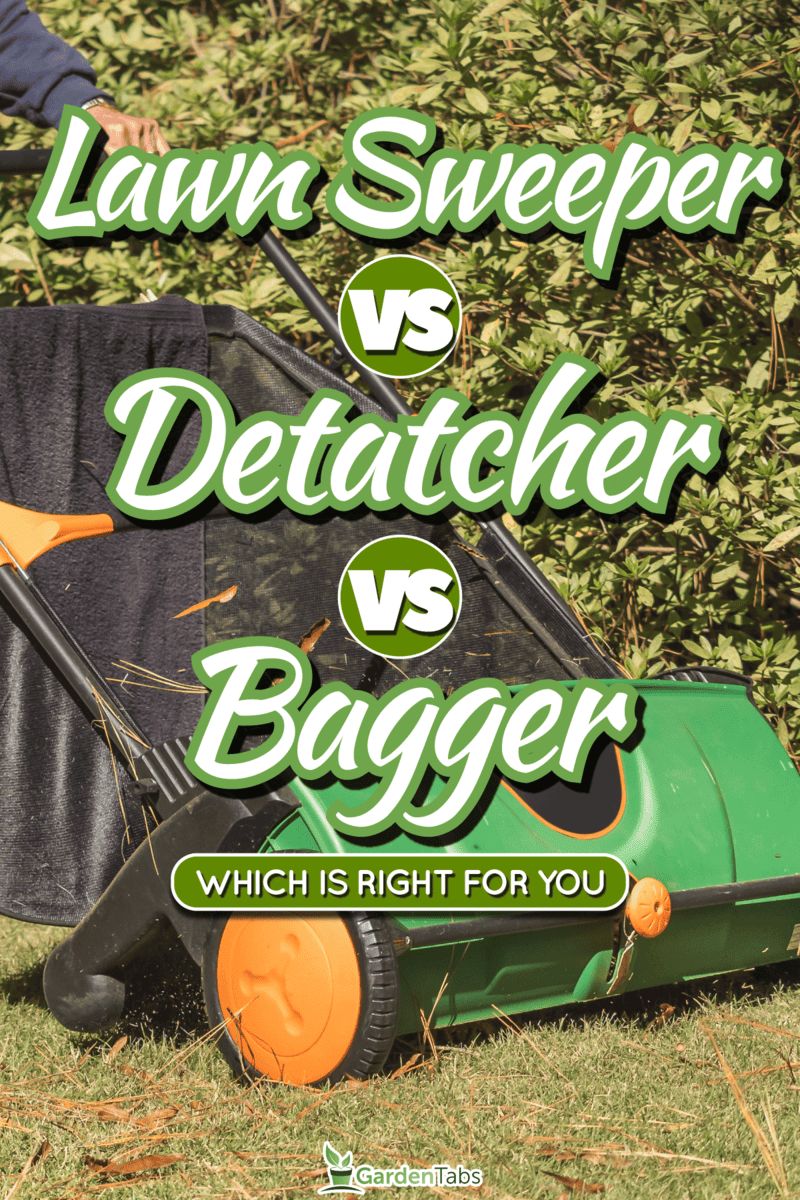Whenever you go to clean up your yard, ideally, you want to choose to use the machinery that works best for you. You are probably wondering which is the best option for you, between a lawn sweeper, dethatcher, and bagger.
We've done all of the necessary research to answer all of the questions you have.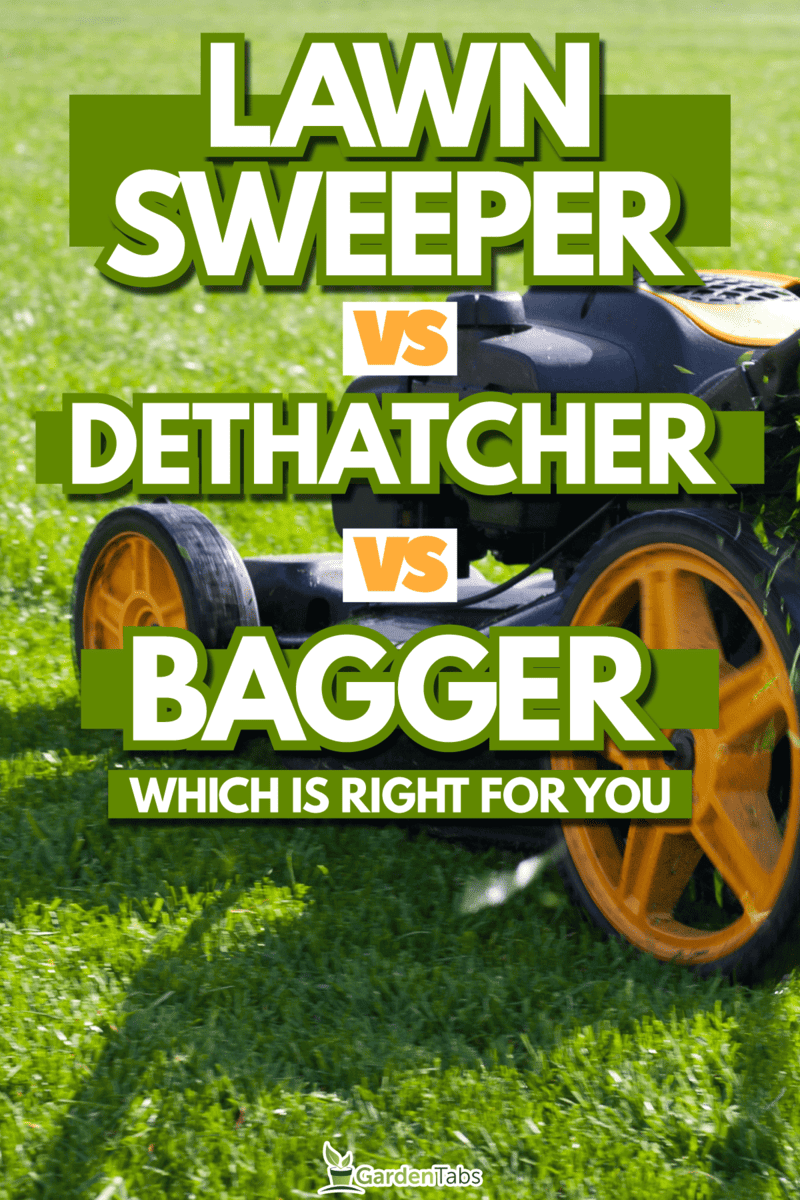
The choice between a lawn sweeper, dethatcher, and bagger depends on the yard or land you intend to work on.
A lawn sweeper is typically used for larger spaces but will not pick up as much as a bagger.
You should use a dethatcher when you see half of an inch to an inch of thatch.
Continue reading to learn more about the differences between a lawn sweeper and a bagger, whether or not you can use a lawn sweeper for dethatching, when is the best time to dethatch your lawn, and more.
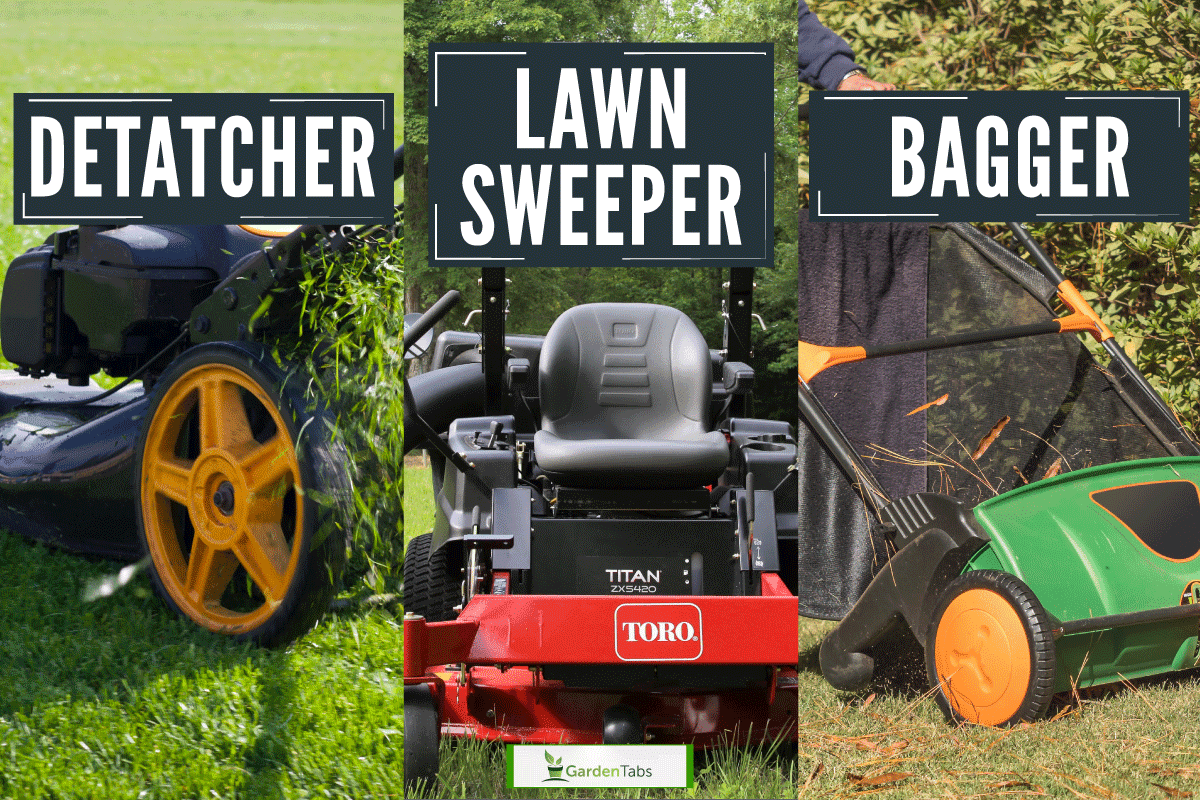
What's the difference between a lawn sweeper and a bagger?
A lawn sweeper is different from a lawn mower or a bagger. They serve similar purposes, though, in that they both pick up grass clippings. One difference is that a lawn sweeper is a device used after someone cuts the grass. A bagger, on the other hand, picks up the grass clippings as you cut them.
One advantage of using a lawn sweeper is picking up leaves, acorns, pine needles, and even small twigs!
Lawn sweepers have a brush that rotates as it is pushed or pulled around the yard. This brush is what causes the device to be able to gather what is picked up and thrown into the big collection bin.
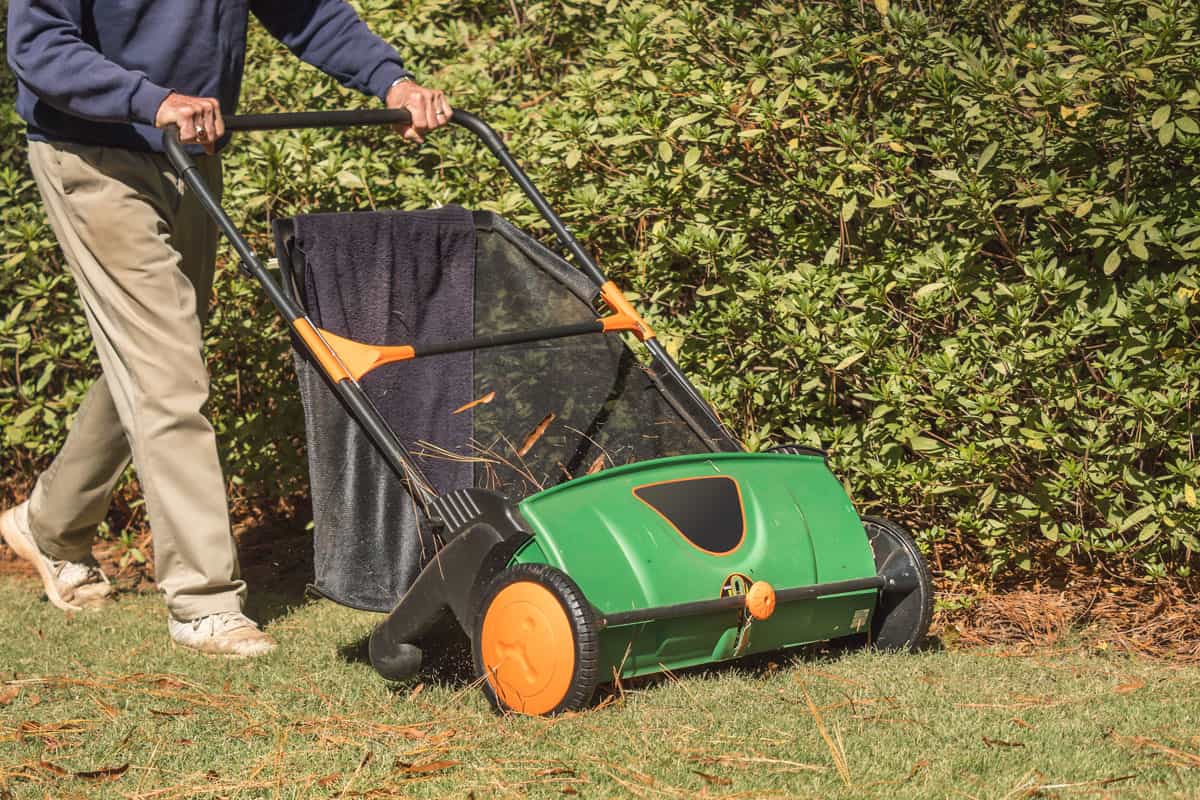
A bagger gathers grass clippings, pinecones, leaves, twigs, and anything else that is sucked up into the blades. Whatever goes into it is chopped up and then ends up in the bag attached to your lawn tractor.
Imagine a lawn tractor with a bag attached to the back when talking about a bagger. That is where everything it picks up goes into. Typically the bag is made of tight nylon mesh.
Both baggers and lawn sweepers will save you time and energy. When using a lawn sweeper, it is best to go around your yard and pick up anything you see, such as big sticks or branches that have fallen.
Doing so will ensure you do not damage your equipment in the process.
It would help if you bagged or collect grass clippings because they will rot otherwise. If you mow somewhat frequently, you will not have that problem. If your grass clippings are long, it is best to bag or collect the grass clippings before they rot and kill the grass below.
Tow-behind Lawn Sweeper Versus Push Lawn Sweeper
There are also push lawn sweepers out there. They are smaller but work the same way as the large version. You can either use a push lawn sweeper or a tow-behind one. Push lawn sweepers are about half the price of tow-behind lawn sweepers.
Click here to see this tow-behind lawn sweeper on Amazon
A tow-behind lawn sweeper can be pulled by a riding lawn mower or a lawn tractor. The alternative lawn sweeper is a push lawn sweeper, which is pushed manually. Both types will pick up twigs but cannot pick up sticks or branches that are big.
Either option will save you time, and they are equally satisfying visually. Seeing a cleared yard gives a lot of people a sense of relief.
Whether you use a lawn sweeper or bagger, you need to empty it after you use it. Most people empty their grass clippings into a compost pile.
Click here to see this push lawn sweeper on Amazon.
Push lawn sweepers are not as efficient as tow-behind lawn sweepers. Tow-behind lawn sweepers are more powerful because they are run by a mower or tractor.
Neither type of lawn sweeper is a good choice for picking up gravel or stones of any kind. You can damage your lawn sweeper by attempting to pick up even small pebbles. Check your yard for rocks before you mow.
Do lawn sweepers actually work?
Lawn sweepers do actually work! They help make the job of cleaning up your yard faster. A tow-behind lawn sweeper takes most of the manual labor right out of the job.
One of the best things about lawn sweepers is that they clean up the grass clippings and small twigs. As the brush turns, the clippings, pine needles, and leaves get picked up.
If you wonder whether a lawn sweeper can pick up acorns, it can! They are not great for picking up rocks, gravel, or dog poop. All you have to do is empty the collection bin when it is full, and you will be good to go.
Can a lawn sweeper be used as a Dethatcher?
While a regular lawn sweeper cannot be used as a dethatcher, you can purchase a dethatching attachment. They are easy to attach, so it doesn't take much extra time. Dethatcher attachments are made to be durable.
Click here to see this 42" Dethatcher Attachment on Amazon.
Using a dethatcher attachment eliminates the need to dethatch your lawn by hand. The attachment causes the tines to comb through the matted thatch, which is then loosened and brought to the surface. This is how the lawn sweeper is able to pick it up.
For smaller dethatching jobs, a dethatching rake will work just fine. As for using a lawn sweeper, you will need the correctly sized attachment.
When should I Dethatch my lawn?
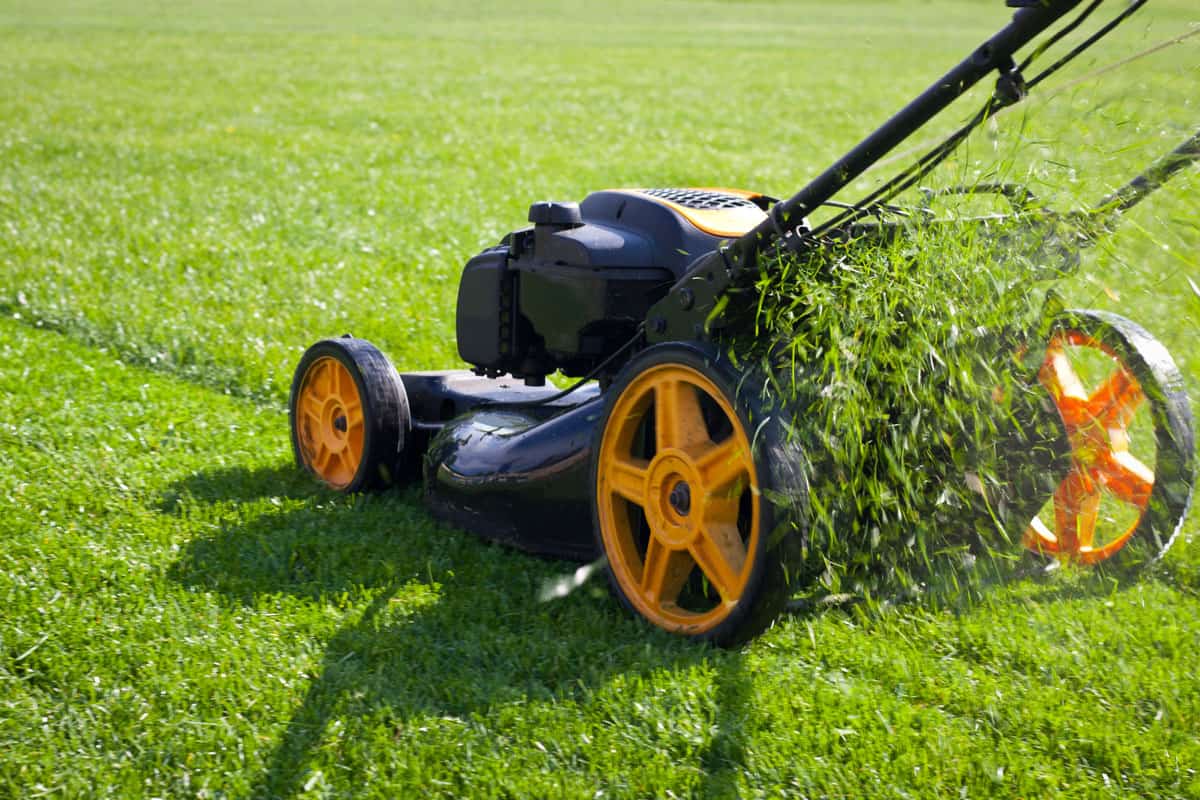
The point of a dethatcher is to remove thatch from your lawn, so the best time to do it is when you see patches of thatch. Thatch that is as thick as one inch or thicker will stop water from seeping into the soil beneath it. It is time to dethatch the lawn whenever you see thatch that is half an inch thick or thicker.
If you notice water running off of your grass when you try to water it, that is a sign it is the right time to dethatch your lawn. Another indicator of it being the right time to dethatch your lawn is if you see brown spots in the yard. You can cut a small section of grass, thatch, and soil with a shovel or trowel to make it easier to see how thick the thatch is.
There are necessary steps after you dethatch your lawn to have a lush green lawn. Either use a dethatcher attachment or dethatching rake to clear the excess thatch. After that, you need to reseed or overseed. The last step is to fertilize your lawn.
Can dethatching hurt your lawn?
Yes, dethatching has the potential to damage a yard in a couple of ways. You have to learn what to avoid. When you detach ground that has weed seeds in the layers of dirt that will now be able to grow in the topsoil, you may want to rethink dethatching.
It takes between three and four weeks for a lawn to recover after you dethatch your lawn. You should aerate your lawn after dethatching it. The three to four-week time frame is about after the lawn has been aerated.
Do lawn sweepers work on uneven ground?
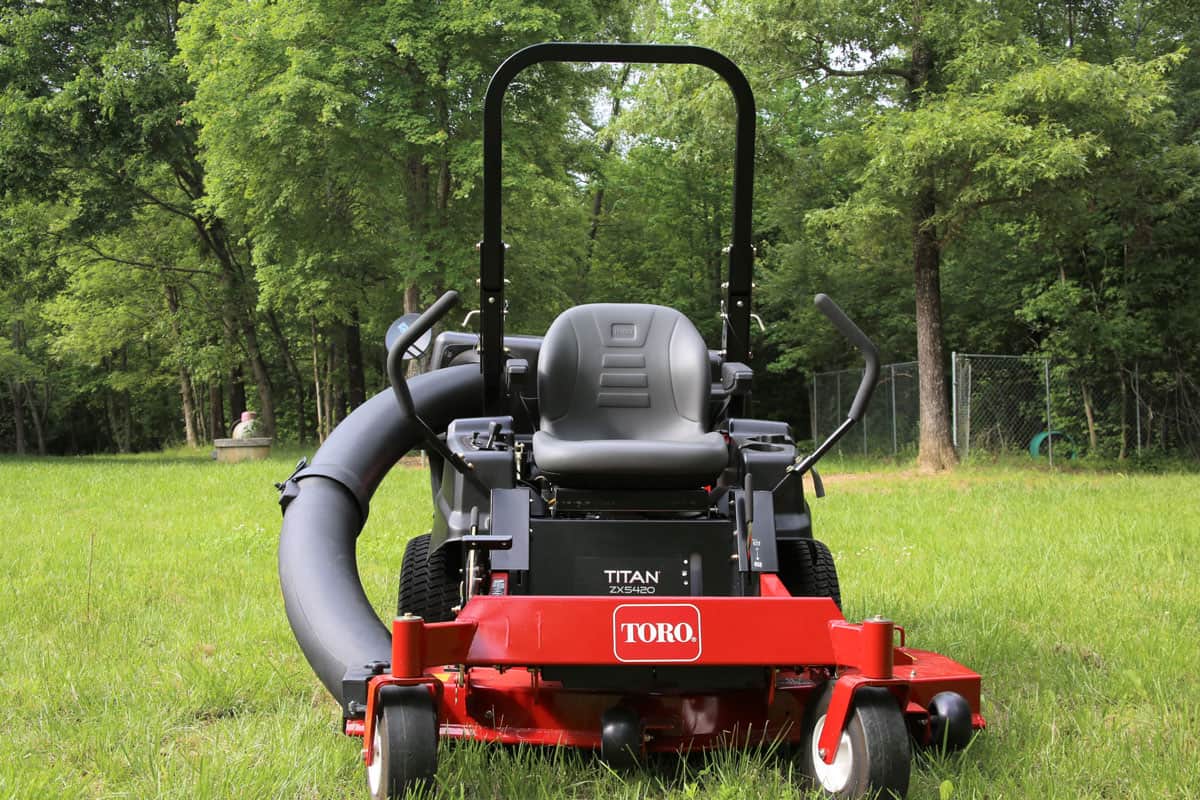
Yes, lawn sweepers work on uneven ground. They are not quite as efficient on uneven ground, though.
If you use a push lawn sweeper, you should use it on a flat yard. Pushing a lawn sweeper uphill or through an uneven yard takes a lot more work.
The biggest thing to look out for when using a lawn sweeper on uneven ground is that it may not collect everything that needs collecting on the first try.
You may need to go over the ground twice, which will take more time to get the job done. Some lawn sweepers work just fine on uneven ground.
To Wrap Things Up
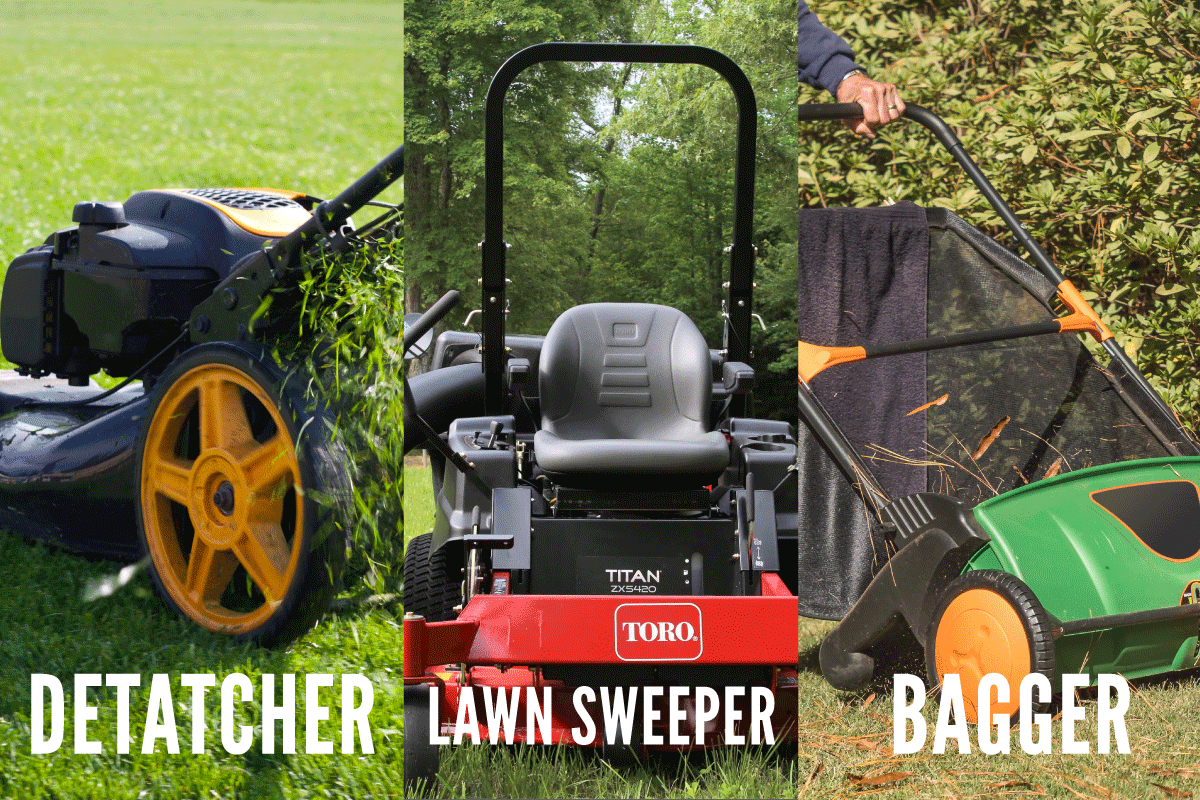
Both lawn sweepers and baggers eliminate the need to rake up cut grass after mowing your lawn. When mowing long grass, you should use a bagger or lawn sweeper to collect leaves, small twigs, and grass clippings.
The best time to use a dethatcher is when thatch is visible and about half an inch thick or thicker.
Before you go, check out the following links that you might be interested in:
How To Clean Up After Dethatching

